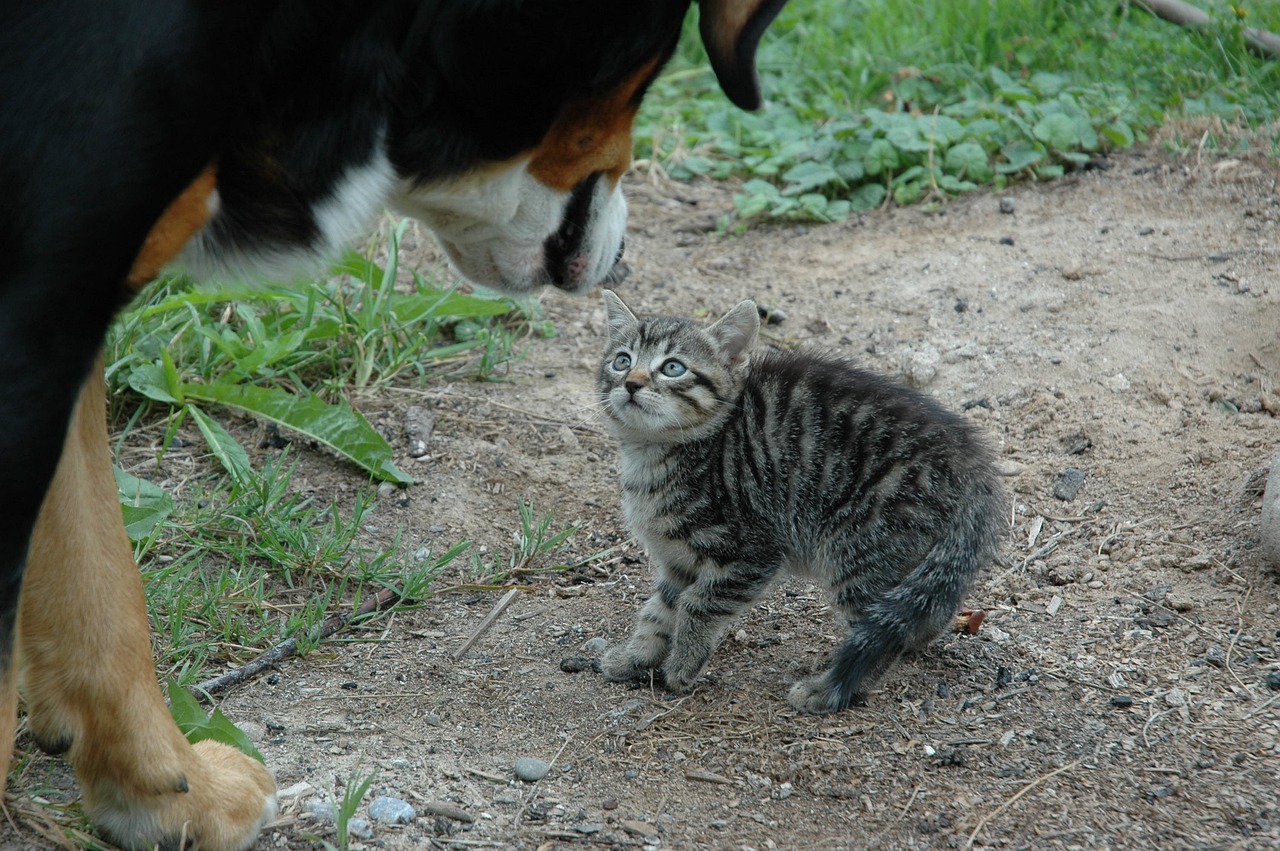Welcoming a new pet into your home can be an exciting time, but introducing a dog to a cat requires careful consideration and preparation. A smooth introduction is crucial to fostering a positive relationship between these two distinct species. If not handled properly, initial interactions between a dog and a cat can be overwhelming, leading to stress and potential conflicts.
We’ll walk you through the step-by-step process of introducing a dog to a cat. We’ll cover everything from creating a safe environment to facilitating positive interactions. Whether you’re bringing a new furry friend into your household or attempting to integrate existing pets, our expert tips and insights will help ensure a harmonious coexistence between your dog and cat.
Introduce a Dog to a Cat
The Canine and Feline Behavior
Before diving into the introduction process, it’s essential to understand the fundamental differences in canine and feline behavior. Dogs are pack animals with a hierarchical structure, while cats are more solitary and territorial by nature. Recognizing these distinctions will help you manage the introduction effectively.
Preparing Your Home for the Introduction
Creating a safe and comfortable environment is key to a successful introduction. Use these tips to prepare your home for the new addition:
- Designated Spaces: Set up separate spaces for your dog and cat initially. Provide each pet with a bed, toys, and a litter box or outdoor area for the cat.
- Scent Exchange: Familiarize your pets with each other’s scent. Swap bedding or use a cloth to rub one pet’s scent on the other.
- Visual Barriers: Use baby gates or pet barriers to allow visual contact without physical interaction.
- Feeding Stations: Keep feeding areas separate to prevent any competition for resources.
The Gradual Introduction Process
Now that your home is ready, follow this gradual introduction process to ease your dog and cat into each other’s lives:
- Brief Sniffing Sessions: On-leash, allow your dog to sniff around the closed door of the room where the cat is. Reward calm behavior with treats.
- Supervised Meetings: With the dog on a leash and the cat free to roam, have controlled, supervised interactions. Use positive reinforcement and treats to reward calm behavior.
- Positive Associations: During these supervised meetings, engage in activities that both pets enjoy. Play with toys or give treats to reinforce positive associations.
- Body Language Awareness: Pay close attention to body language during interactions. Look for signs of fear or aggression and intervene if necessary.
- Gradual Increase in Interaction Time: Gradually increase the time your dog and cat spend together, and always monitor their behavior.
Managing Challenges
- Calm Reactions: If your dog reacts aggressively, avoid punishment. Instead, redirect attention and reward positive conduct.
- Separation when Unsupervised: Until you’re confident in their relationship, keep them in separate areas when you’re not around to supervise.
- Cat’s Safe Space: Ensure your cat has access to high perches or hiding spots where they can escape from the dog if needed.
Signs of Progress
- Relaxed Body Language: Observe if both pets display relaxed body language during interactions, indicating they are becoming comfortable with each other.
- Playful Interactions: Look for playful behavior between the dog and cat, such as chasing toys together or engaging in gentle wrestling.
- Shared Space: Gradually allow them to share space without barriers, but continue to supervise their interactions.
Addressing Challenges
- Persistent Aggression or Fear: Seek advice from a professional animal behaviorist if your pets display persistent aggression or fear.
- Slow Down if Necessary: If the introduction process isn’t going smoothly, don’t rush it. Go back to earlier steps and allow more time for adjustment.
Conclusion
Introducing a dog to a cat can be a rewarding experience with the right approach and patience. Remember to understand the different behaviors of both species and take the time to create a positive association between them. The gradual introduction process, along with supervised interactions, will pave the way for a harmonious and loving relationship between your furry friends.


